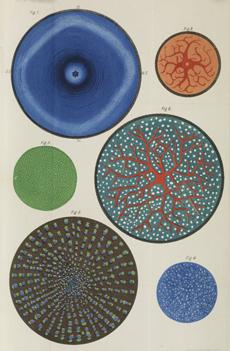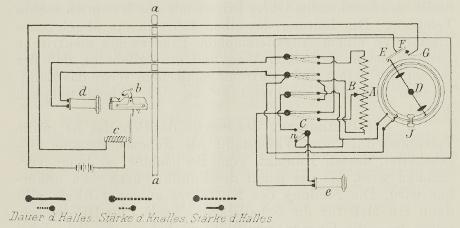Scientific inventions and discoveries are not always made in the disciplines that are strictly responsible for them. Sometimes it is in neighboring disciplines or domains of everyday life, art, or technology that new scientific questions arise. This is especially true for the history of acoustics. Acoustics only started to become established as an academic discipline at the end of the nineteenth century, though the first definitions of the subject date back much further. As early as 1701, mathematician Joseph Sauveur argued for a distinction to be drawn between music theory, with its emphasis on euphonious sounds, and a general science of sound. Sauveur’s call, in turn, built on an existing interest in the physical and mathematical definition and experimental study of sound that had been growing since the sixteenth century. However, during the sixteenth to nineteenth centuries it was mainly instrument builders, musicians, architects, and engineers whose practical dealings with sound fueled the formation of acoustic theory. In the twentieth century, the production of acoustic knowledge became the province of disciplines as varied as physics, medicine, zoology, psychology, phonetics, linguistics, philosophy, musicology, and architecture.
This interdisciplinarity is exemplified by room acoustics. Regarded as a subdiscipline of physics in the early twentieth century, room acoustics profited from an invention that originated outside the field when the Viennese physiologist Sigmund Exner presented his “acoustometer” (figure 1) in 1905.

Figure 2: Visual afterimages. Sigmund Exner, “Ueber einige neue subjective Gesichtserscheinungen,” Archiv für die gesamte Physiologie des Menschen und der Tiere 1 (1868) 1, p. 375–94.
The instrument’s purpose was to measure reverberation in auditoriums. Exner was director of the Physiological Institute in Vienna, which had built a new auditorium the year before. Observing the construction work, Exner realized that room acoustics was still at a rudimentary stage. The American physicist Wallace Clement Sabine had recently discovered the reverberation time formula, making it possible to partially predict acoustic quality from architectural designs, but Exner did not trust Sabine’s measurements of reverberation. Sabine had relied on his own hearing to measure the interval between the beginning of a sound event and its dying away. As a physiologist, Exner raised doubts about this method—and not only because he knew that the threshold of human hearing, and therefore the determination of the reverberation time, is variable. He also suspected that the ear could only perceive reverberation to a limited extent. Exner’s conjecture was based on his physiological studies of the afterimage phenomenon. In 1886, Exner had investigated what his subjects could see when they closed their eyes after looking at differently colored light sources (figure 2).
Twenty years later, when Exner became interested in room acoustics, he identified similar processes for the ear. It seemed that in hearing, too, a sound event left an acoustic afterimage that lingered even when the source had long since fallen silent. This, argued Exner, made it impossible to determine the reverberation of an auditorium precisely using just the human ear—for the afterimage produced by the ear could not be separated from the room’s reverberation.
Exner’s acoustometer was an instrument designed to remedy this problem. It consisted of two electrical cables leading from the auditorium into an adjoining room (figure 3). The first cable could be used to fire a pistol in the auditorium from inside the adjoining room; because the shot could not be heard in that room, the researchers did not experience an acoustic afterimage. Through the second cable, which operated after a delay, they could only hear the reverberation and measure its intensity and duration. Exner boasted that his invention for the first time delivered reliable figures that enabled the reverberation in different auditoriums to be compared. He compiled lengthy comparative tables himself, and triumphantly quoted from Goethe’s Faust: “What we possess in black and white, / We can in peace and comfort bear away.”
So Exner was not only fascinated by subjective processes of perception; he also wanted to provide science with new means of objective data collection. His knowledge of the shortcomings of human hearing motivated him to develop the acoustometer. In terms of disciplinary history, the acoustometer stands for the epistemic entanglement of electroacoustics, room acoustics, and the physiology of hearing. In terms of cultural history, it marks the advent of a new concept of reverberation, and thus a new culture of listening concerned with room acoustics. The notion of reverberation arose in European architectural theory in the late eighteenth century—a period when bourgeois theatre and concert-going was taking shape, and with it the need to offer large audiences the same conditions for listening and watching without disruptive effects such as over-long reverberation times. Reverberation was thought of as the interval of time between a sound source ceasing and sound pressure falling (by 60 decibel) to below the human hearing threshold. But in the acoustometer, reverberation was no longer tied either to human perception or to the listening practices of theatre and concert culture, the ground on which modern understandings of reverberation had grown.

Figure 3: Construction plan for Exner’s acoustometer. Sigmund Exner, Über die Akustik von Hörsälen und ein Instrument, sie zu bestimmen, Vienna: privately published, 1905.
This typifies the shifts in acoustic knowledge that are explored by the new Max Planck Research Group Epistemes of Modern Acoustics. The group addresses acoustics in its dual role as an object of knowledge and a producer of knowledge. We ask about the conditions that enable acoustic knowledge—guided by the premise that the genealogy of acoustic knowledge goes beyond the history of the exact sciences and involves a considerably broader cultural and historical context. The group focuses on the religious, political, and artistic practices, the media technologies, and the material cultures that prompted a new study of the nature and perception of sound. Acoustic strategies of knowledge production are another of the research group’s interests. What historical knowledge could be acquired or represented only acoustically? When and how were acoustic apparatuses, instruments, and machines deployed as alternative means of research?
These questions will be answered through the prism of historical case studies in the field of acoustic subdisciplines such as bioacoustics, electroacoustics, and underwater acoustics, or more specifically through phenomena including acoustic memory, listening culture in Calvinism, the materials of musical instruments, elevator music, and sound photography. Four working groups, each with 10–15 researchers, will come together several times over a period of three years. Their themes are (1) “Testing Hearing: Science, Art, Industry,” (2) “Sonic Objects in Transition: Knowledge, Science, Heritage,” (3) “Betwixt and Between: Sound in the Humanities and Sciences,” and (4) “The Geography of Sound: Formation, Transformation, and Circulation of Acoustic Knowledge and Practices.” Together, the four groups will create a website providing access to difficult-to-find sources in the history of acoustics.
The research group Epistemes of Modern Acoustics is based on a collaboration between the Max Planck Institute for the History of Science and the Humboldt-Universität zu Berlin, and forms part of the Berlin Center for the History of Knowledge. Additional funding is provided by the Volkswagen Foundation. Further cooperation partners are the University of Amsterdam, the Deutsches Museum in Munich, the DFG research network Auditory Knowledge in Transition, and the French ANR project ECHO (Ecrire l’Histoire de L’Orale).
